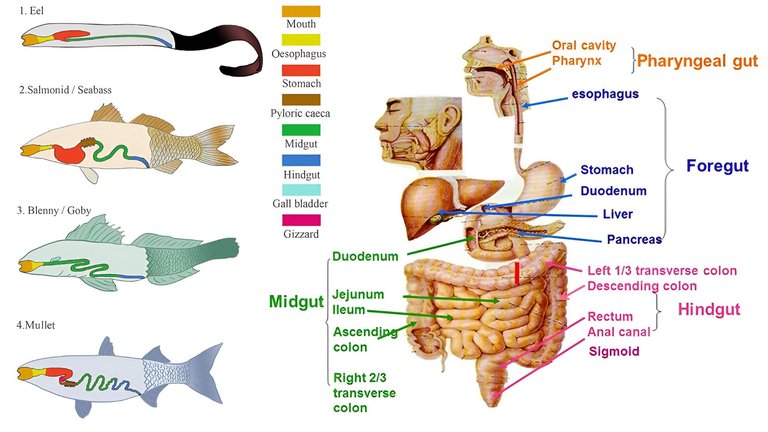In this video I discuss how animals obtain energy and nutrients from food via the digestive system. Animals are heterotrophs since they feed on other living organisms for energy and organic compounds. The amount of energy stored in food is quantified based on the amount of heat emitted when burnt with oxygen, and has units of calories or kilojoules. Digestion of the food is done through a tubular tract that extends from the mouth to the anus, which breaks down food into small molecules that get absorbed by the blood. The remaining food that does not get absorbed are stored as indigestible waste and excreted as feces.

Time stamps
- Animals are heterotrophs as they feed on living organisms to obtain energy and organic compounds: 0:00
- Excess chemical energy is stored as lipids (fats) for future use and some as glycogen for more immediate use: 3:08
- Illustration of the chemical makeup of the human body: 6:46
- Digestive system is a tubular tract from the mouth to the anus to breakdown food: 9:07
- Animation of peristalsis, moving objects through a tube via contraction and relaxation: 10:23
- Diagram of different digestive systems of fish: 11:23
- Vertebrate animals also have accessory glands such as the liver and pancreas to assist in digestion: 16:03
- Diagrams showing small intestine, large intestine, and surrounding organs: 19:11
- Images of vestigial remnants in humans: Wisdom teeth, tailbone, third eyelid, goosebumps, and Palmar grasp reflex: 26:43
Full video below
- Summary: https://peakd.com/hive-128780/@mes/kuubczxn
- Full video and playlist: https://www.youtube.com/playlist?list=PLai3U8-WIK0FYO6bxFbBAtVJ9sDOJnH72
- Notes: https://peakd.com/hive-128780/@mes/messcience-3-overview-of-biology
- MES Science playlist: https://www.youtube.com/playlist?list=PLai3U8-WIK0GhjCHmTw1XbqMD_EdVKdd9 .
Become a MES Super Fan! https://www.youtube.com/channel/UCUUBq1GPBvvGNz7dpgO14Ow/join
DONATE! ʕ •ᴥ•ʔ https://mes.fm/donate
SUBSCRIBE via EMAIL: https://mes.fm/subscribe
MES Links: https://mes.fm/links
MES Truth: https://mes.fm/truth
Official Website: https://MES.fm
Hive: https://peakd.com/@mes
Email me: contact@mes.fm
Free Calculators: https://mes.fm/calculators
BMI Calculator: https://bmicalculator.mes.fm
Grade Calculator: https://gradecalculator.mes.fm
Mortgage Calculator: https://mortgagecalculator.mes.fm
Percentage Calculator: https://percentagecalculator.mes.fm
Free Online Tools: https://mes.fm/tools
iPhone and Android Apps: https://mes.fm/mobile-apps
▶️ 3Speak